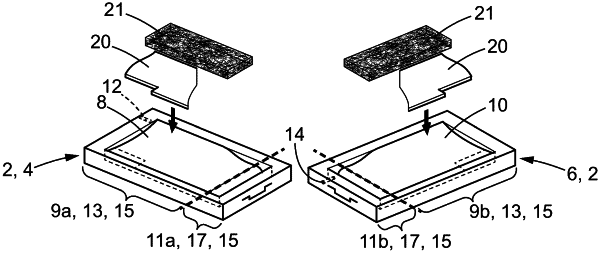| CPC B22D 19/04 (2013.01) [B22D 19/02 (2013.01); B22D 19/14 (2013.01); B33Y 80/00 (2014.12); C22C 47/06 (2013.01); C22C 47/08 (2013.01); C22C 49/06 (2013.01); D03D 1/00 (2013.01); D03D 15/242 (2021.01); D10B 2101/08 (2013.01); D10B 2505/02 (2013.01); F01D 5/30 (2013.01); F05D 2230/314 (2013.01); F05D 2300/603 (2013.01)] | 13 Claims |

|
1. A method for manufacturing a vane for a turbine engine including a root connected to a blade extending according to a longitudinal direction, the method comprising the steps of:
a) providing a root made of a titanium-based alloy, the root being configured to be assembled on a disc;
b) providing a mold comprising a first cavity and a second cavity together defining a recess in which the blade is formed, said recess comprising a first space in which the blade is formed and a second space in which the root is formed,
c) providing aluminum strips including a coating comprising at least one of the hydrophobic and anti-erosion functions and placing them in contact:
with the first cavity in the first space of the recess, and/or
with the second cavity in the first space of the recess;
d) placing a fibrous reinforcement in the first space of the recess and/or in the second space of the recess and at least partially in contact with the aluminum strips;
e) arranging said root in the second space of the recess of said mold; and
f) injecting a compound comprising aluminum into the first space of the recess of the mold so that the compound impregnates the fibrous reinforcement.
|